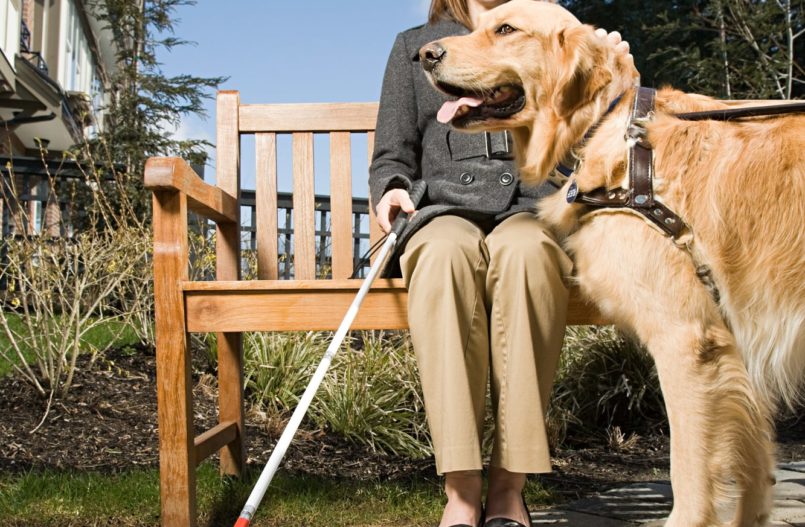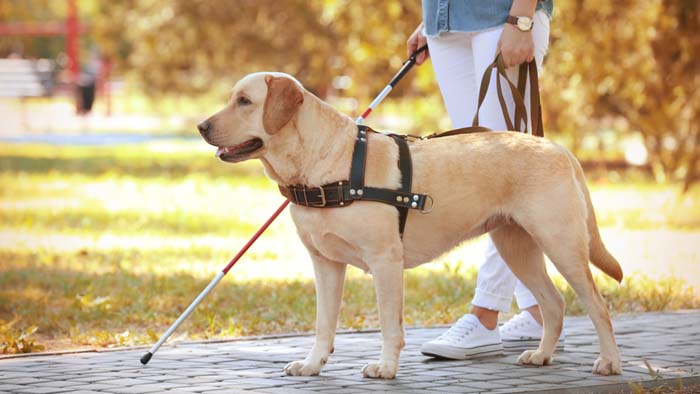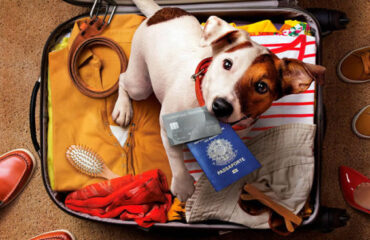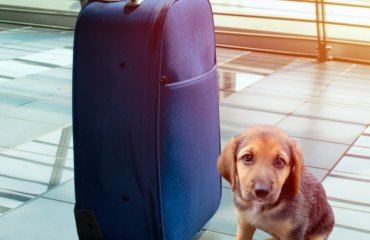
The guide dog is the ideal animal for people who have some kind of special need or need help to orient themselves on the streets or perform specific tasks, such as getting out of bed, preparing a meal, finding an object and even going out. from home.
In addition to helping the mobility and independence of blind people, the animal is essential to restore self-esteem and promote a better quality of life for these people.
Now, if you are interested in this subject, keep reading this content that PETFriendly Turismo has prepared to answer all your questions about guide dogs.
What is a guide dog?

The guide dog is an animal specially trained to help the visually impaired in their daily lives with tasks that require greater attention and care.
In this way, they undergo rigorous training, which typically lasts one and a half to two years.
Dressage consists of three phases: socialization, training and instruction, and begins when these animals are still young.
At first, they live with volunteer families to socialize and learn simple commands.
In the second phase, they receive specific training to guide people with visual impairments. Finally, guide dogs are instructed together with their owner.
In order to guide a blind person, the animal needs to be intelligent, docile and of medium or large size, as they need strength to guide their humans.
Therefore, we can say that the most used breeds are the Labrador and the Golden Retriever. However, it is also possible to train borders and German shepherds.
How important is the guide dog?
The guide dog is very important to improve the quality of life of people with disabilities, especially visually.
By helping with locomotion and carrying out small activities, such as preparing a meal and getting around, the animal provides not only security but also independence for its owners.
And even if this freedom is “partial”, it allows the visually impaired to have social interaction. In addition, it also implies gains in self-esteem and ends up making them not feel incapacitated.
The main responsibilities of a guide dog
Theguide dogis trained to help blind people get around and perform everyday tasks. Therefore, your main responsibilities are:
- Guide its owner indoors and in public spaces;
- Help its owner to cross the street;
- Avoid obstacles such as holes, people, elevations in the path;
- Go in any orderly direction;
- Always keep to the left and a little ahead of the owner;
- Help the tutor to enter the transport public;
- Wait in silence for the companion standing still;
- Do not be distracted by other animals or the smell of food;
- Make the companion stay close to the elevator button; among others.
The animal is still trained to disobey orders that bring danger to its owner and itself.
Despite having responsibilities, the animal also needs moments of leisure, as well as affection and attention.
Who is a guide dog suitable for?

The guide dog is suitable for legally blind people who wish to carry out small activities and move with some independence, without the help of other people.
Legally blind people are people with visual capacity less than 0 .3 and greater than or equal to 0.05 in the best eye, even when using the best optical correction (glasses or contact lens).
In addition, to have the animal, the visually impaired person needs to have good physical and psychological health, in addition to having attended high school.
Still, the person who wants to have a guide dog needs to be able to keep the animal with housing and food.
Does this animal retire?
Just like humans, older animals lose some skills and find it difficult to perform simple tasks, so they also need to retire.
In the case of dogs, they begin to lose their hearing and eyesight as they get older.
Because the guide dog job involves assisting and helping blind people, they retire between the ages of 8 and 10.
The retired animal can stay with the owner or be adopted by a known family.
Identifying a guide dog

To carry out its work, the guide dog must wear a collar and harness, accessory that helps the animal to guide its owner.
In addition, to identify it, just observe how the animal behaves close to its owner.
It will always be on the left and slightly ahead of its owner. If you need to talk to the tutor, arrive on the right side.
Furthermore, it is important to emphasize that the dog cannot be distracted from his responsibilities. Therefore, do not try to play with or offer treats to the animal.
How to travel with a guide dog by plane?
To travel with theguide dog by plane, it is necessary to pay attention to the airline travel policies, documentation and the rules of the destination country.
In addition, it is necessary to inform the airline in advance, preferably at the time of purchase of airline tickets. The transport of the animal is free.
On the plane, the dog must travel next to its owner’s seat on the floor. In addition, your collar must have a badge that identifies you as a guide dog.
Still, the airline can request that the identification plate has, in addition to the name of the animal and owner, the name of the training center or trainer and its CNPJ or CPF.
When is it worth having a guide dog?
It is worth having a guide dog when the visually impaired want to perform simple activities and get around safely but without needing the help of other people.
In addition to helping with daily activities, such as leaving the house or getting on a bus, the animal is essential for the visually impaired to be able to interact socially with other people and feel useful.
However, the quality of life and self-esteem of blind people who own the animal is positively impacted.
So, if you want to know more about it or have a guide dog, contact PetFriendly Tourism to speak with an expert.







You must be logged in to post a comment.